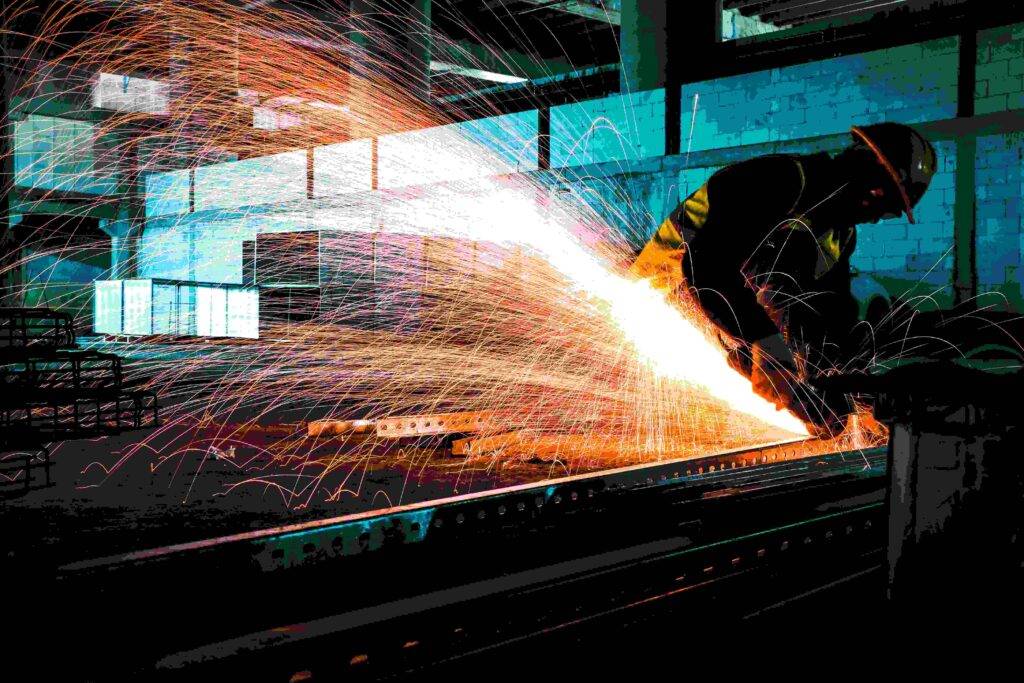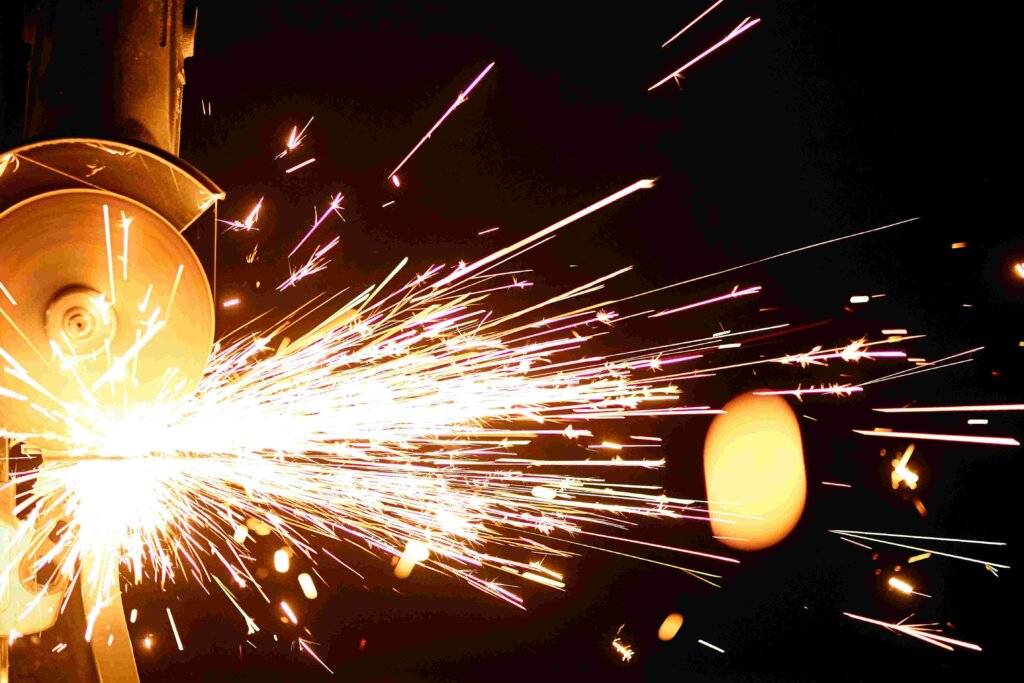What can an angle grinder do? Why it is an essential tool? Lets explore the answer.
Angle grinders are versatile power tools that are essential in any handyman’s toolkit. From cutting and grinding to sanding and polishing, these machines have the ability to tackle a wide range of tasks with ease.
While they may seem intimidating at first glance, with the right techniques and safety precautions, angle grinders can be a valuable asset for both professional tradesmen and DIY enthusiasts.
In this article, we will explore the various capabilities of angle grinders and how they can be used to make your projects run smoother and more efficiently.
Whether you are a seasoned craftsman or a novice looking to expand your skill set, understanding what an angle grinder can do will prove to be an invaluable asset. So, let’s dive in and uncover the endless possibilities of this powerful tool.
Versatile tool for various tasks
An angle grinder, with its powerful motor and versatile design, is an indispensable tool that can handle a variety of tasks with ease. From cutting through metal pipes and ceramic tiles to shaping and grinding surfaces, this tool offers a wide range of applications for both DIY enthusiasts and professionals.
Its adjustable guard allows for precision and safety, while the interchangeable discs and attachments provide flexibility for different projects.
Whether it’s removing rust, sharpening blades, or polishing surfaces, the angle grinder proves to be a reliable and efficient tool for accomplishing various tasks in construction, metalworking, woodworking, and beyond. With its durability and adaptability, the angle grinder is a valuable addition to any toolbox or workshop.
Cuts metal, tile, and more
The versatility of an angle grinder extends beyond imagination as it effortlessly cuts through tough materials such as metal and tile. With its powerful motor and cutting capabilities, this tool becomes an essential companion in various projects.
Whether you need to trim metal pipes to size or create precise cuts in ceramic tiles, the angle grinder provides the strength and precision necessary to achieve professional results. Its ability to handle diverse materials makes it an invaluable asset in construction, renovation, and even artistic endeavors.
From metal fabrication to tile installation, the angle grinder proves its worth by conquering any challenge thrown its way.
Grinds, sands, and polishes surfaces
Equally impressive is the angle grinder’s ability to grind, sand, and polish surfaces to perfection. With the right attachments and accessories, this tool becomes a master of surface refinement. Whether you’re looking to smooth out rough edges, remove stubborn rust or paint, or achieve a flawlessly polished finish, the angle grinder has got you covered.
Its powerful rotating disc allows for efficient material removal, while its adjustable speed settings provide precise control over the grinding, sanding, and polishing process.
From preparing surfaces for painting or coating to restoring old furniture or metalwork, the angle grinder’s versatility in surface treatment makes it an indispensable tool in any professional or DIY enthusiast’s arsenal.
Functions of an Angle Grinder
- Removes paint and rust from metal surfaces
- Smooths out rough wood or metal edges
- Shapes and cuts tiles or bricks
- Polishes and shines metal or stone surfaces
- Grinds down welds and joint areas
- Sharpens blades and tools like axes and shovels
Ideal for home and construction projects
The versatility of the angle grinder makes it an ideal tool for a wide range of home and construction projects. Whether you’re a homeowner looking to tackle DIY renovations or a professional contractor working on a construction site, the angle grinder can handle various tasks with ease.
Its ability to cut through metal, concrete, and masonry makes it invaluable for tasks such as cutting rebar or tiles during a home renovation, or for making precise cuts in metal pipes or sheet metal during construction projects.
Additionally, the angle grinder’s grinding and polishing capabilities make it perfect for smoothing surfaces, removing mortar, or even shaping stone for landscaping projects.
With its power, precision, and versatility, the angle grinder is a reliable companion for any home improvement or construction endeavor.
Easy to handle and maneuver
One notable advantage of the angle grinder is its exceptional ease of handling and maneuverability. Designed with ergonomics in mind, this tool features a compact and lightweight design, allowing for comfortable operation even in tight spaces or overhead applications.
The strategically placed handle provides a secure grip, minimizing fatigue and increasing control during extended use. Additionally, many angle grinders come equipped with adjustable side handles, enabling users to customize their grip for optimal comfort and stability.
This user-friendly design ensures that even those with limited experience can confidently operate the angle grinder with precision and efficiency, making it a preferred choice for professionals and DIY enthusiasts alike.
Adjustable speed for precision work
To further enhance its versatility, an angle grinder often includes an adjustable speed feature, making it an invaluable tool for precision work. This allows the user to control the rotational speed of the grinding disc or cutting wheel, catering to different materials and tasks.
When dealing with delicate or intricate projects, such as polishing or fine detail work, a lower speed setting can be selected to ensure accuracy and prevent damage. On the other hand, for tasks that require quick and efficient material removal, a higher speed setting can be utilized.
Whether you are working with metal, wood, or even masonry, the ability to adjust the speed of the angle grinder enables you to tailor its performance to the specific demands of the job at hand, ensuring precise and professional results every time.
Suitable for both small and large projects
Angle grinders are incredibly versatile tools that are suitable for both small and large projects. Whether you are tackling a home improvement task or working on a professional construction site, an angle grinder is designed to handle a wide range of projects with ease. From cutting through metal pipes to grinding down concrete surfaces, the power and efficiency of an angle grinder make it a go-to tool for both DIY enthusiasts and experienced professionals.
Its compact size and maneuverability make it suitable for intricate tasks, while its robust motor and cutting capabilities allow it to tackle larger projects with precision and speed. No matter the size or complexity of your project, an angle grinder is a reliable and efficient tool that will help you achieve excellent results.
A must-have in any workshop.
When it comes to equipping a workshop with essential tools, an angle grinder is an absolute must-have. With its versatility and power, an angle grinder can handle a multitude of tasks with ease, making it an indispensable tool for any workshop. From cutting and shaping metal to polishing surfaces and even removing rust, an angle grinder offers a wide range of applications. Its ability to quickly and accurately remove material and make precise cuts makes it invaluable for various projects, whether it’s woodworking, metalworking, or even automotive repairs.
The durability and reliability of an angle grinder ensure that it can withstand the demands of a busy workshop and provide consistent performance over time. In summary, an angle grinder is a vital tool that no workshop should be without, offering endless possibilities for creativity and efficiency in any project.
In summary, an angle grinder is a versatile and powerful tool that can be used for a wide range of tasks. From cutting and grinding metal to sanding and polishing surfaces, this tool is a valuable asset for both professional contractors and DIY enthusiasts.
With proper safety precautions and practice, an angle grinder can help you achieve precise and efficient results in your projects. Whether you are a professional or a hobbyist, an angle grinder is a must-have tool in your arsenal. So next time you have a tough project, consider using an angle grinder for its numerous capabilities and benefits.
FAQ
What are the main uses of an angle grinder in construction and home improvement projects?
An angle grinder is a versatile tool used in construction and home improvement projects for various purposes. Its main uses include cutting through various materials such as metal, tile, and concrete, grinding and smoothing surfaces, removing rust or paint, sharpening tools, and shaping materials. Its compact size and powerful motor make it ideal for tasks that require precision and control.
Additionally, with the right attachments, an angle grinder can also be used for sanding, polishing, and even cutting through masonry. Overall, the angle grinder is a valuable tool that helps professionals and DIY enthusiasts tackle a wide range of tasks efficiently.
Can an angle grinder be used for cutting metal, concrete, or other tough materials?
Yes, an angle grinder can be used for cutting metal, concrete, and other tough materials. Angle grinders are versatile tools that are commonly used in construction and metalworking industries. They are equipped with abrasive discs or blades that can easily cut through various materials.
However, it is important to use the appropriate type of disc or blade for the specific material being cut, as different materials require different cutting techniques and blades.
Additionally, safety precautions should be taken when using an angle grinder, such as wearing protective gear and following the manufacturer’s instructions.
Are there any safety precautions that should be taken when using an angle grinder?
Yes, there are several safety precautions that should be taken when using an angle grinder. These include wearing appropriate personal protective equipment such as safety goggles, gloves, and a face shield to protect against flying debris. It is also important to use the grinder with both hands and maintain a firm grip on the tool.
The grinder should be inspected before use to ensure the guard is in place and functioning properly. Additionally, the work area should be clear of flammable materials and bystanders should be kept at a safe distance. Regular breaks should be taken to prevent fatigue, and the grinder should be turned off and unplugged when not in use.
What types of attachments or accessories can be used with an angle grinder to enhance its functionality?
Some common attachments and accessories that can enhance the functionality of an angle grinder include cutting discs, grinding discs, wire brushes, sanding discs, polishing pads, and diamond blades. These attachments allow the angle grinder to perform various tasks such as cutting, grinding, polishing, sanding, and removing rust or paint.
Additionally, there are also specialized attachments available for specific applications like concrete grinding or tile cutting. It is important to ensure that the attachments used are compatible with the specific angle grinder model and appropriate safety precautions are followed while using them.
Are there any alternative tools or methods that can achieve similar tasks as an angle grinder?
Yes, there are alternative tools and methods that can achieve similar tasks as an angle grinder. Some alternatives include:
- Rotary tools: Tools like a Dremel can be used for precision cutting, grinding, and polishing tasks.
- Power saws: Circular saws, reciprocating saws, or band saws can be used to cut through various materials, such as metal or wood.
- Hand tools: Depending on the task, hand tools like files, hacksaws, or chisels can be used for cutting or shaping materials.
- Chemical solutions: In some cases, chemical solutions like paint strippers or solvents can be used to remove coatings or adhesives, eliminating the need for physical grinding.
It’s important to consider the specific task at hand and choose the appropriate tool or method accordingly.



